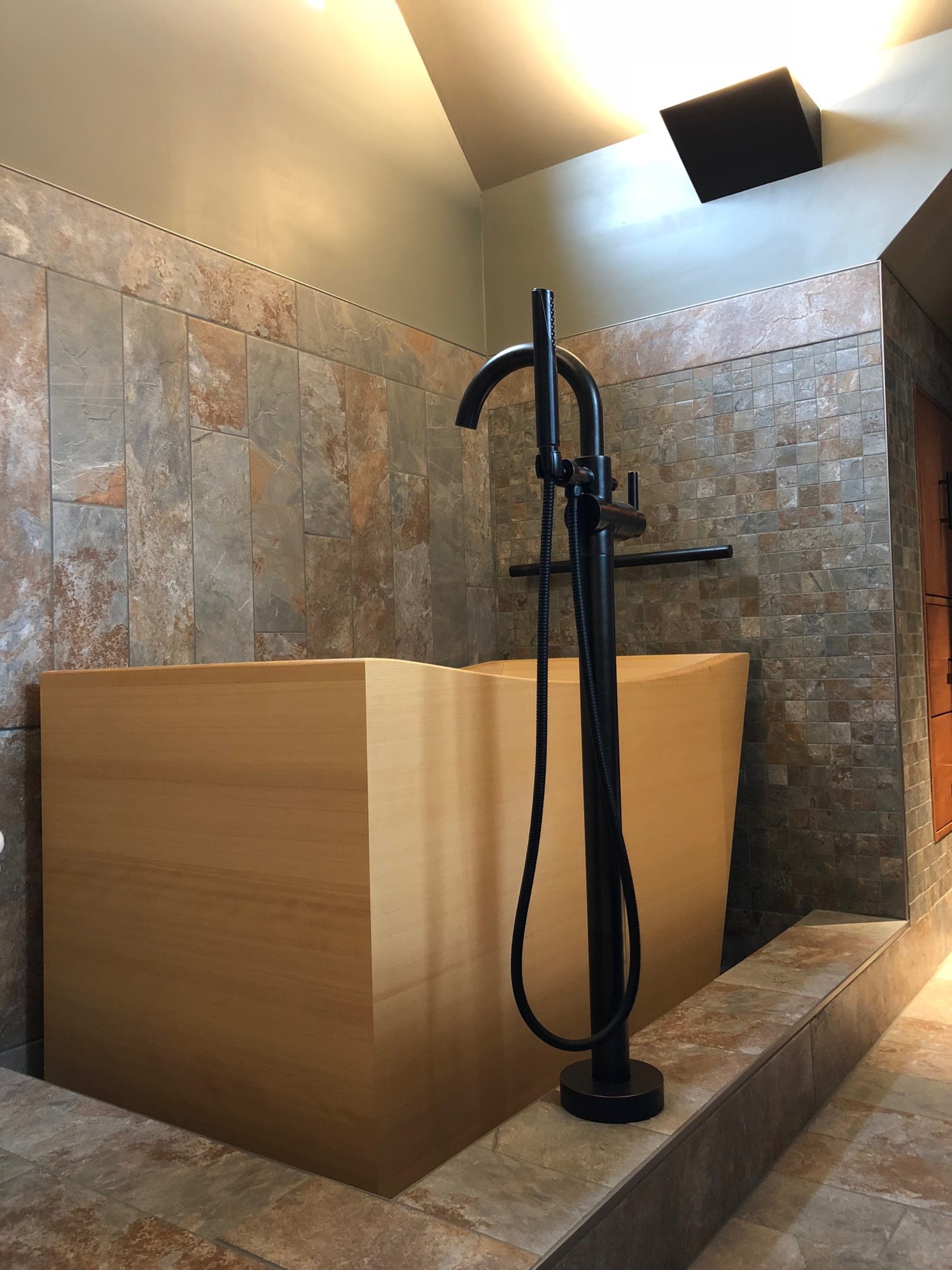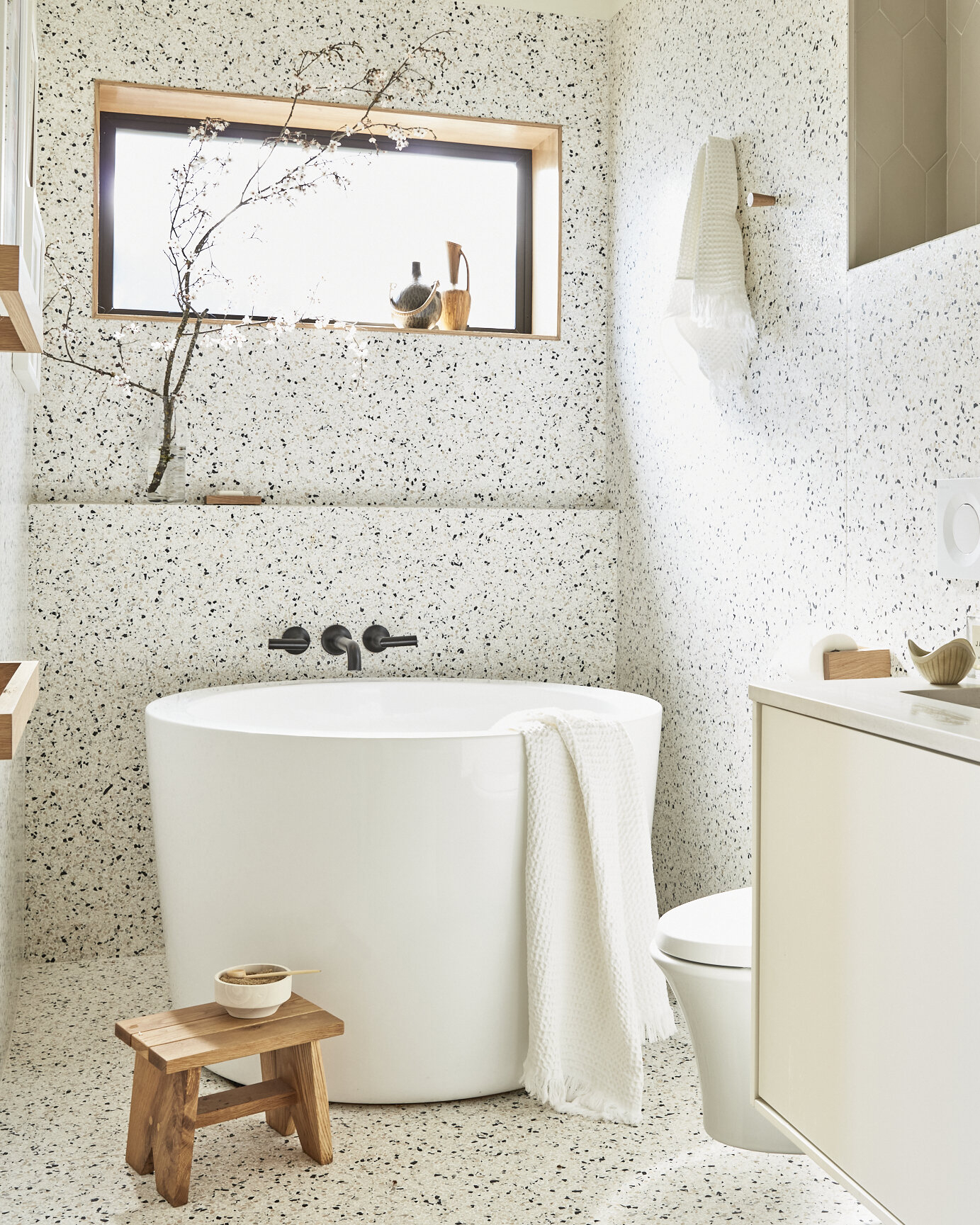What is a Japanese soaking tub? How to give your bathroom a modern twist on this ancient wellness trend
A Japanese soaking tub might just be the bathing trend you need if you're looking to add a bit of luxury to your bathroom


Unless you're a bathing connoisseur you probably haven't heard of the Japanese soaking tub, yet, this luxurious take on a regular bath has been growing in popularity among designers and homeowners alike.
While these interesting tubs are certainly trending at the moment, the modern bathroom idea is actually inspired by an far more ancient tradition. The concept of the Japanese soaking tub, also know as an Ofuro, originates from ancient Japan and, it short, it's a deep bathtub that's purposefully designed for a long relaxing soak.
Unlike a regular bath, you would traditionally shower and wash your body before getting into the tub, saving this bath for soaking instead. The tub itself is especially steep-sided and is typically shorter in length which forces the bather to sit up, fully immersed in water up to their chest.
Since more of us are looking to our homes for comfort and relaxation to promote or wellbeing, the Japanese soaking tub has soared in popularity. 'People love the beautiful modern aesthetic of a hand-crafted, warm, natural wood tub,' explains Ken Larson, general manager at Zen Bathworks who craft Japanese soaking tubs.
'The simple beauty and traditional design combined with unusual depth offer the bather a bit of luxury that is easy to use,' he adds. 'Traditional, organic wooden Ofuros offer a silent steaming refuge from the artificial pressures of society.'

Lilith is an expert at following news and trends across the world of interior design. She's committed to sharing articles that help readers keep up-to-date with changing styles and embrace emerging trends. For this piece, she spoke with fitters of Japanese soaking tubs to understand more about this wellness bathroom trend and how to embrace it in your home.
What are Japanese soaking tubs made of?
Traditionally, Japanese soaking tubs were built of cypress wood, also known as Hinkoki, a material used to build temples in Japan. However, now they've been reclaimed as a bathroom trend, they're manufactured in more contemporary materials such as stone, steel and copper.
The scent of cypress timber is the main reason the material is used for these relaxing baths. 'The lemon/ginger scent of the Hinoki wood is aromatherapy at its best,' explains Kent of Zen Bathworks. 'Also, most Ofuros are hand-crafted out of wood, they afford customers two things that the typical mass-produced bathtub options do not; one, customizations and two, the beautiful aesthetic appeals that only wood can offer.'
Be The First To Know
The Livingetc newsletters are your inside source for what’s shaping interiors now - and what’s next. Discover trend forecasts, smart style ideas, and curated shopping inspiration that brings design to life. Subscribe today and stay ahead of the curve.

Wooden varieties - also often made of red cedar or teak - bring a beautiful soft, neutral aesthetic to your bathroom that has a spa-like feel. Modern customizations of this ancient bath idea can also adapted to suit individual needs. As Kent explains: 'For one customer we built a 2-in-1 tub: they planned to use one compartment for a hot soak and the other for a cold plunge.'
How can you incorporate a Japanese soaking tub into your bathroom?
If you're interested in embracing the Japanese soaking trend in your bathroom, you'll have to consider whether you have the space available since these large, deep baths take up a lot of room. Once fitted, they add a real sense of luxury to a bathroom and pair beautifully with stone-effect bathroom wall tiles and black brassware for a contemporary feel.
If you're fortunate enough to have the space available, you then have to consider where the tub would work best in your bathroom. 'Free-standing installations are the easiest way to install a Japanese soaking tub since our Ofuros have a fine finish on all sides,' explains Kent. 'Alternatively you can place the tub in a corner, alcove, or recess.'

Those who are sold on this bathroom wellness idea will be pleased to hear that most fitters offer a choice of different drain configurations including indirect, standard overflow, or remote drain and overflow. 'We recommend indirect on a wet-floor for the easiest installation,' adds Kent. 'For an extra aesthetic appeal, consider a river rock foot surround concealing in-floor trench drains.'

Lilith Hudson is a freelance writer and regular contributor to Livingetc. She holds an MA in Magazine Journalism from City, University of London, and has written for various titles including Homes & Gardens, House Beautiful, Advnture, the Saturday Times Magazine, Evening Standard, DJ Mag, Metro, and The Simple Things Magazine.
Prior to going freelance, Lilith was the News and Trends Editor at Livingetc. It was a role that helped her develop a keen eye for spotting all the latest micro-trends, interior hacks, and viral decor must-haves you need in your home. With a constant ear to the ground on the design scene, she's ahead of the curve when it comes to the latest color that's sweeping interiors or the hot new style to decorate our homes.
-
 Turns Out the Coolest New Café is Actually In Your Kitchen — Here's How to Steal the Style of TikTok's Latest Trend
Turns Out the Coolest New Café is Actually In Your Kitchen — Here's How to Steal the Style of TikTok's Latest TrendGoodbye, over-priced lattes. Hello, home-brewed coffee with friends. TikTok's 'Home Cafe' trend brings stylish cafe culture into the comfort of your own home
By Devin Toolen Published
-
 5 Bathroom Layouts That Look Dated in 2025 — Plus the Alternatives Designers Use Instead for a More Contemporary Space
5 Bathroom Layouts That Look Dated in 2025 — Plus the Alternatives Designers Use Instead for a More Contemporary SpaceFor a bathroom that feels in line with the times, avoid these layouts and be more intentional with the placement and positioning of your features and fixtures
By Lilith Hudson Published